VERY RARE! WWII Original 1944 Operation Watchtower "CONFIDENTIAL" Solomon Islands Campaign D-Day Landing in the Solomons Guadalcanal, Tulagi, and Florida Combat Narrative Intelligence Report with Maps


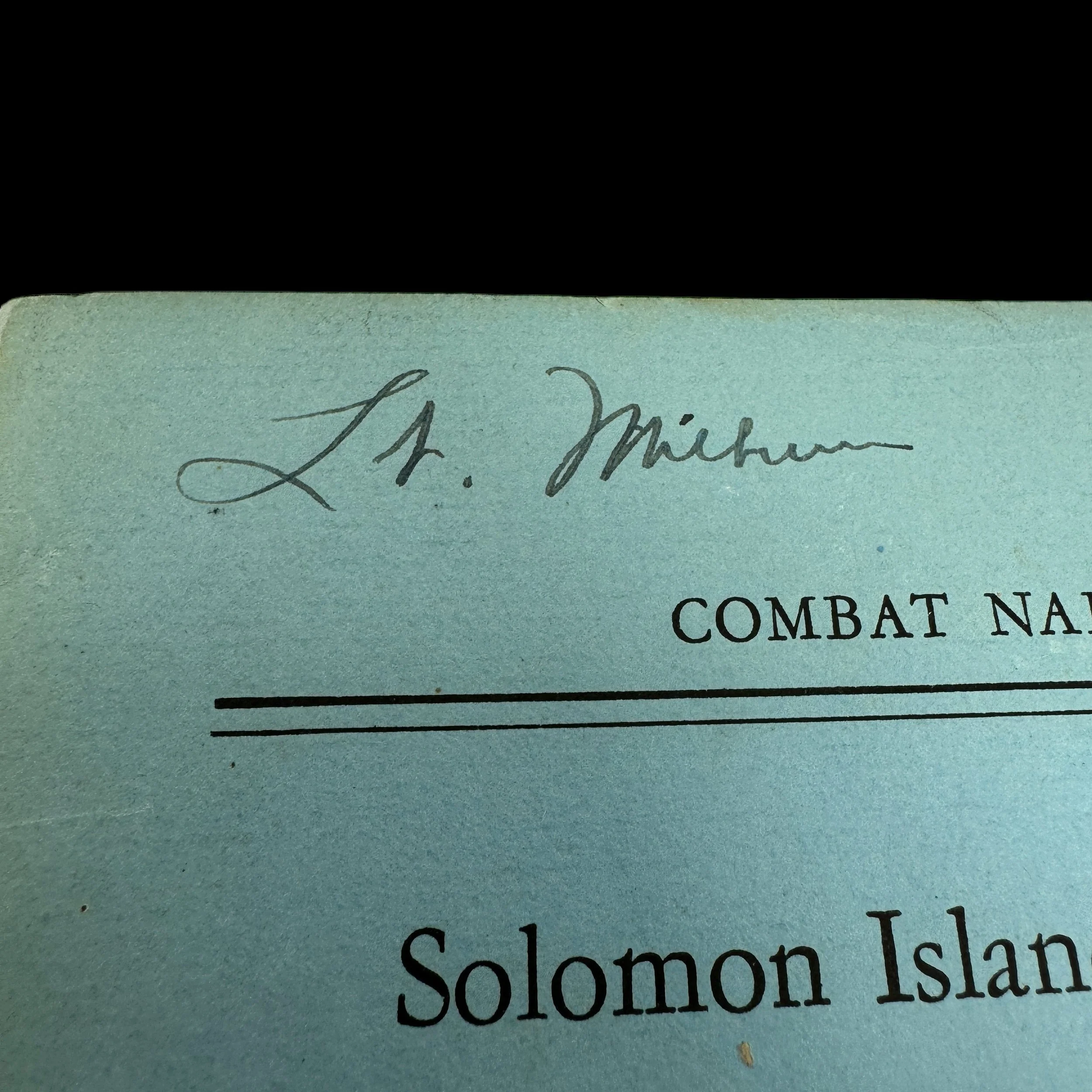




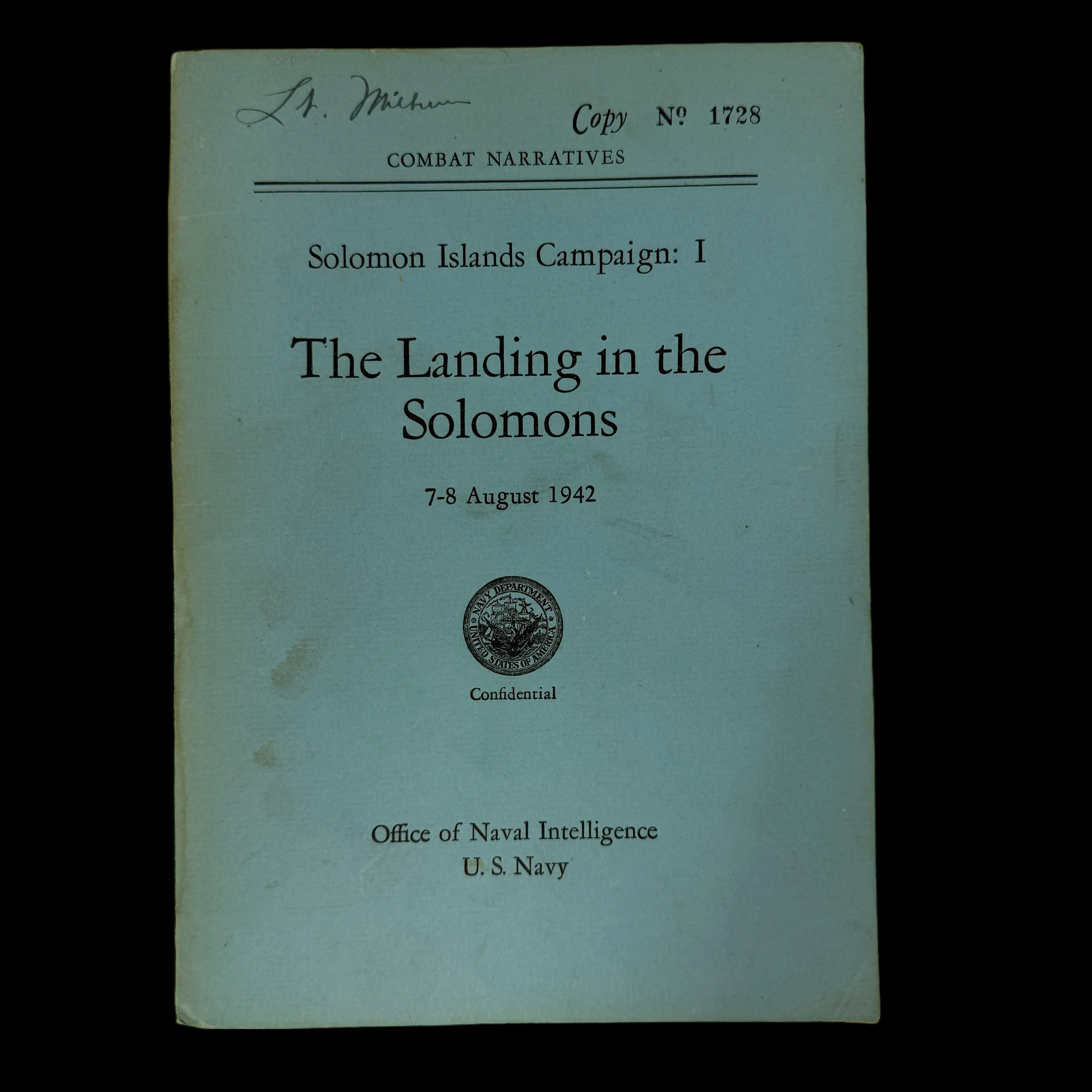







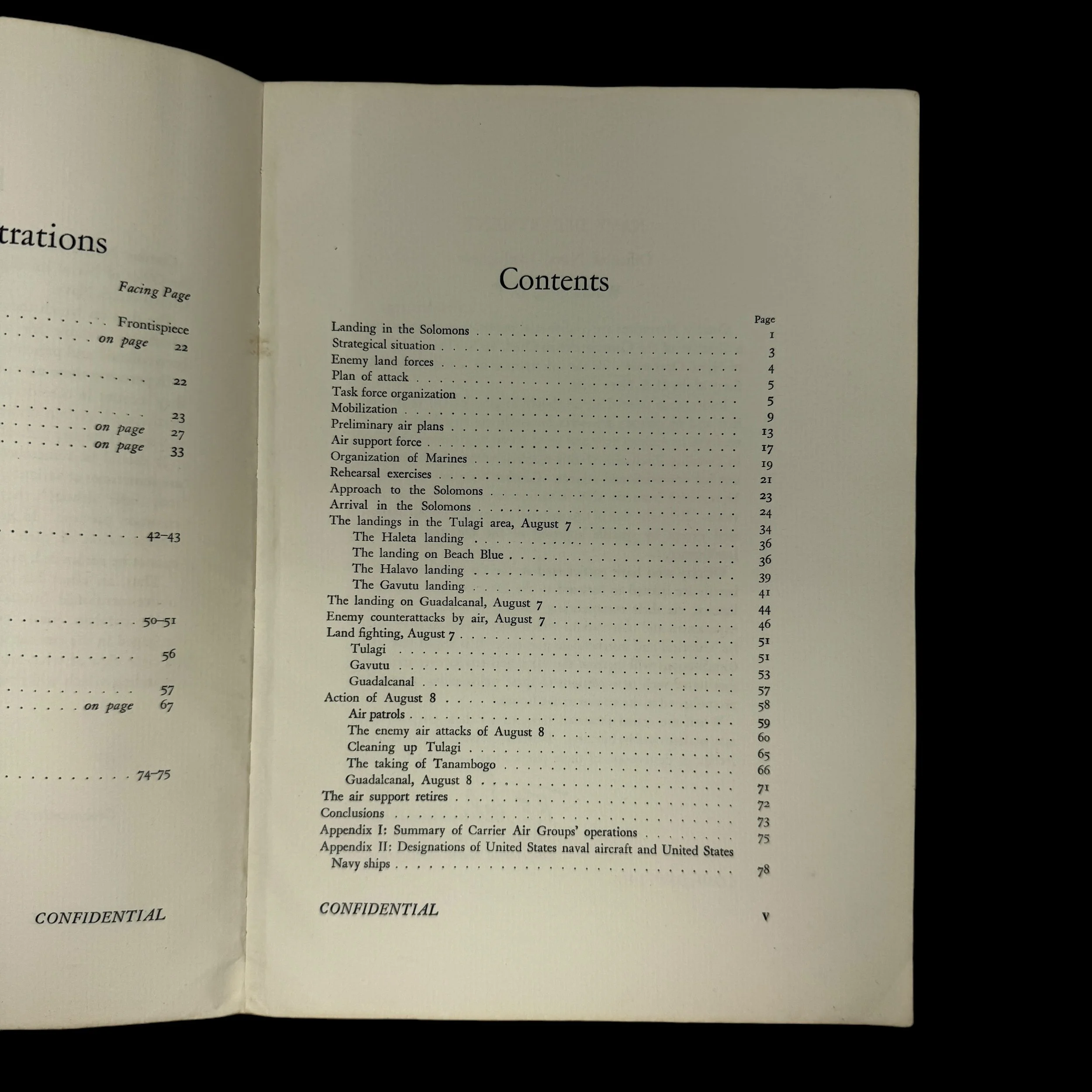

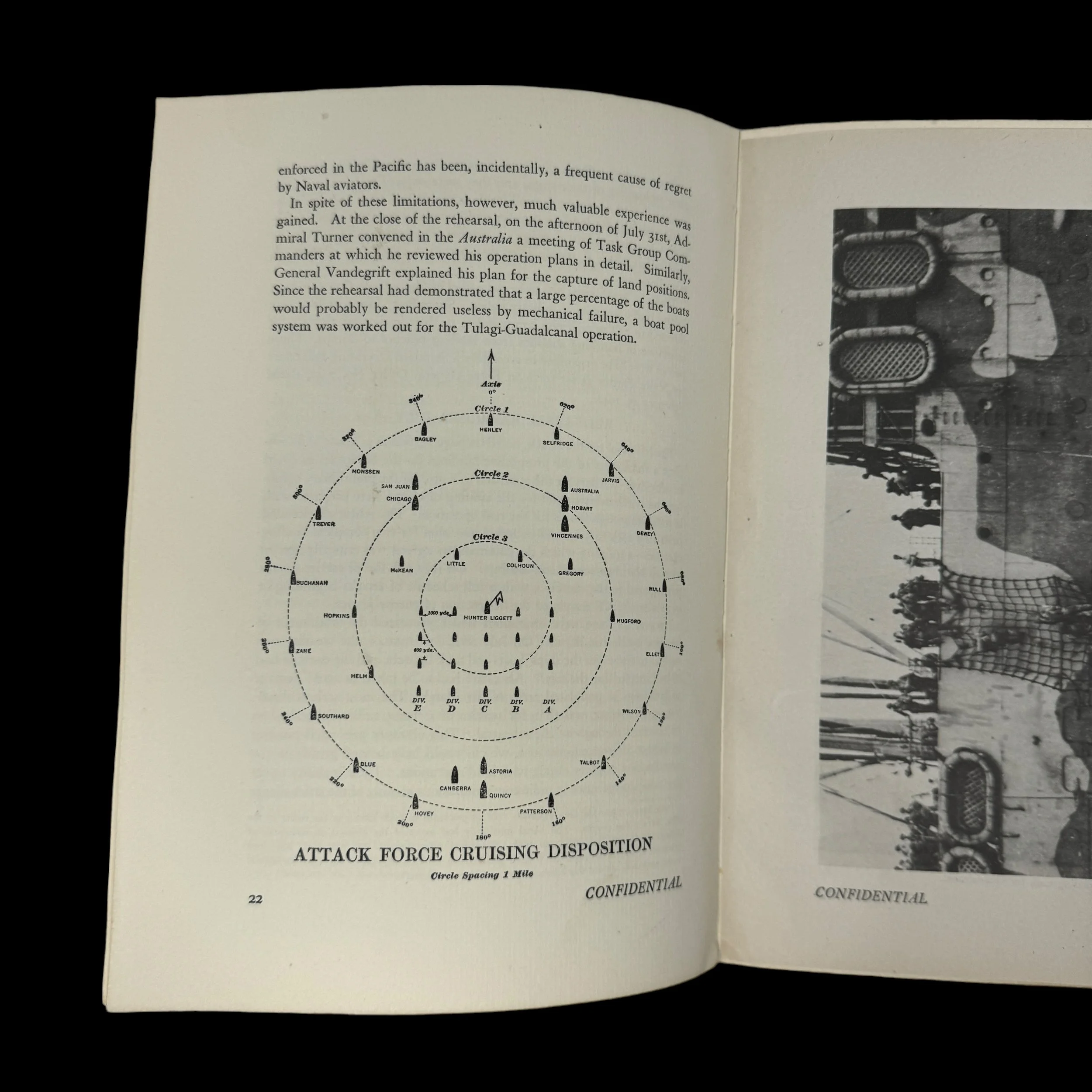















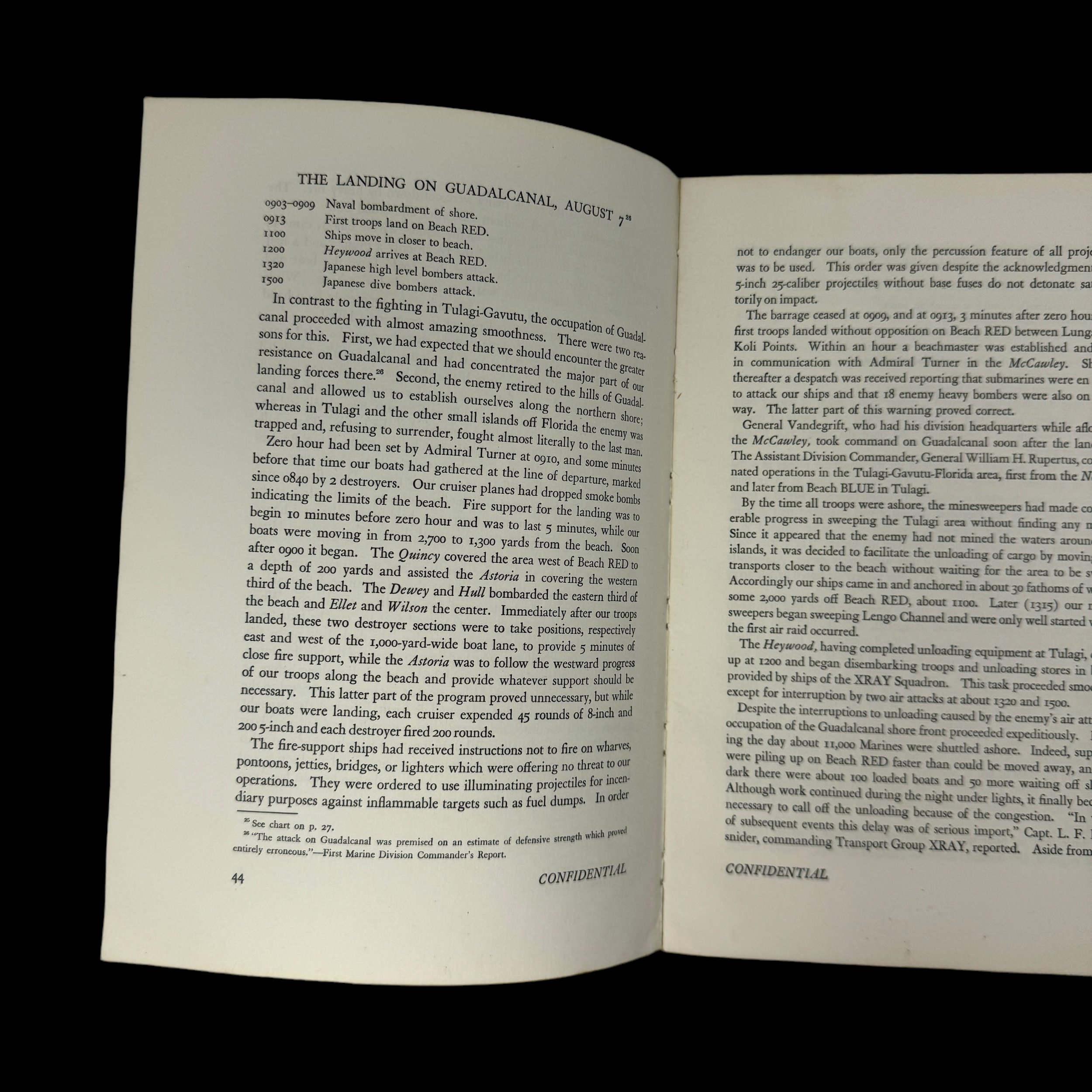
















VERY RARE! WWII Original 1944 Operation Watchtower "CONFIDENTIAL" Solomon Islands Campaign D-Day Landing in the Solomons Guadalcanal, Tulagi, and Florida Combat Narrative Intelligence Report with Maps
Comes with a hand-signed C.O.A.
*On August 7, 1942, U.S. Marines landed on the Solomon Islands of Guadalcanal, Tulagi, and Florida as part of Operation Watchtower, the first U.S. offensive of World War II. The landings were led by Rear Admiral Richmond K. Turner and commanded by Major General Alexander Vandegrift and involved around 6,000 men of the 1st Marine Division. The Marines were supported by strong naval and air forces and faced few initial Japanese defenders. Within 36 hours, they had seized the airfield at Lunga Point on Guadalcanal, which they renamed Henderson Field, and the harbor on Florida Island. The Marines also cleared Tulagi and Florida by August 9.
This extremely rare and museum-grade WWII artifact is an original 1944 dated “CONFIDENTIAL” marked Official U.S. Navy intelligence report (with accompanying CONFIDENTIAL battle maps) of the “Solomon Islands Campaign - D-Day Landing in the Solomons”.
These CONFIDENTIAL “Combat Narrative” of Operation Watchtower reports were created under the of the Commander in Chief, U.S. Fleet and Chief of Naval Operations and were to be read by commissioned officers and high-ranking officials of the USN.
These combat narratives provided the most updated intelligence of battle operations and were meant to provide USN officers and high-ranking Navy officials with CONFIDENTIAL battle accounts, reports, and intelligence to inform future operations and their decisions in battle.
Less than 3,000 of each report was produced and most did not survive as it is noted by REAR ADMIRAL, U.S.N. Director of Naval Intelligence to “DESTROY OR BURN THE COPIES ONCE THEY HAVE BEEN READ AND HAVE SURVED THEIR PURPOSE”.
This specific “Solomon Islands Campaign - D-Day Landing in the Solomons” report was secretly kept by Lt. Milburn which is why it is one of only a small handful of original reports that are still known to exist today.
D-Day Solomon Islands Campaign:
The Solomon Islands Campaign during World War II was a pivotal theater of operations in the Pacific theater, marked by a series of intense naval battles, amphibious assaults, and grueling jungle warfare. This campaign was a significant turning point in the war, as it halted the Japanese advance towards Australia and provided a springboard for Allied offensives in the Pacific. Among the key events in this campaign were the landings in the Solomons, particularly those on August 7th to August 8th, 1942, which laid the groundwork for future Allied victories in the region.
The Solomon Islands, located in the South Pacific, held strategic importance for both the Allies and the Japanese. Control over these islands would provide a crucial foothold for further advances towards Japan or Australia. Thus, the Japanese sought to establish air and naval bases in the Solomons to extend their defensive perimeter and disrupt Allied supply lines. In response, the Allies recognized the need to prevent the Japanese from achieving their objectives in the region and embarked on a campaign to secure the Solomon Islands.
The initial phase of the Solomon Islands Campaign began with the Allied invasion of Guadalcanal, the largest island in the archipelago, on August 7th, 1942. Codenamed Operation Watchtower, this amphibious assault was the first major offensive undertaken by the Allies against Japanese forces in the Pacific. The landing force consisted primarily of U.S. Marines, supported by elements of the U.S. Navy and Allied air power.
The assault on Guadalcanal was preceded by a fierce naval battle known as the Battle of Savo Island, which occurred overnight on August 8th, 1942. Despite being caught off guard by the Japanese, who launched a surprise attack under the cover of darkness, the Allied fleet suffered heavy losses. Several Allied warships, including the cruisers USS Quincy, USS Vincennes, and USS Astoria, were sunk, while others sustained significant damage. The Battle of Savo Island underscored the ferocity of naval warfare in the Pacific and highlighted the challenges faced by the Allies in securing their beachheads.
Despite the setback at Savo Island, the Allied forces successfully established a beachhead on Guadalcanal and began to advance inland. The initial landings were met with stiff resistance from Japanese defenders, who launched counterattacks in an attempt to drive the invaders back into the sea. The fighting on Guadalcanal soon descended into a brutal slog, characterized by intense jungle warfare, harsh terrain, and relentless Japanese assaults.
The Battle of the Tenaru, fought on August 21st, 1942, was one of the early engagements of the Guadalcanal campaign. In this pivotal battle, U.S. Marines repelled a Japanese night attack near the Ilu River, inflicting heavy casualties on the enemy and demonstrating the tenacity and resolve of Allied forces. The Battle of the Tenaru marked a significant turning point in the Guadalcanal campaign and bolstered Allied morale.
In the weeks and months that followed, the fighting on Guadalcanal would escalate into a protracted and bloody struggle for control of the island. Both sides would suffer heavy losses as they waged war in the unforgiving terrain of the Solomon Islands. The Battle of Guadalcanal, as it came to be known, would rage on for six months, culminating in the eventual withdrawal of Japanese forces from the island in February 1943.
The landings in the Solomons from August 7th to August 8th, 1942, marked the beginning of a grueling campaign that would shape the course of the war in the Pacific. Despite initial setbacks and fierce resistance from Japanese forces, the Allied invasion of Guadalcanal ultimately succeeded in denying the enemy a key strategic objective and turning the tide of the war in the Pacific. The Solomon Islands Campaign demonstrated the importance of amphibious operations, air power, and naval supremacy in modern warfare and laid the groundwork for future Allied victories in the Pacific theater.